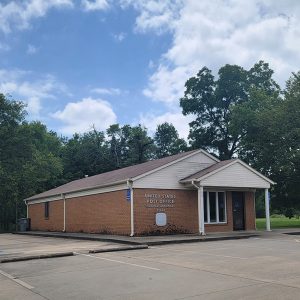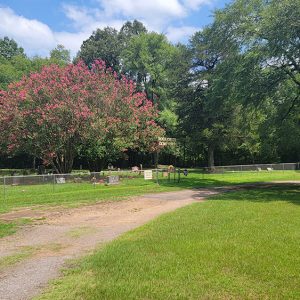calsfoundation@cals.org
Havana (Yell County)
| Latitude and Longitude: | 35º06’40″N 093º31’41″W |
| Elevation: | 381 feet |
| Area: | 0.60 square miles (2020 Census) |
| Population: | 239 (2020 Census) |
| Incorporation Date: | April 19, 1900 |
Historical Population as per the U.S. Census:
|
1810 |
1820 |
1830 |
1840 |
1850 |
1860 |
1870 |
1880 |
1890 |
1900 |
|
– |
– |
– |
– |
– |
– |
– |
– |
– |
– |
|
1910 |
1920 |
1930 |
1940 |
1950 |
1960 |
1970 |
1980 |
1990 |
2000 |
|
621 |
449 |
370 |
449 |
348 |
277 |
308 |
352 |
358 |
392 |
|
2010 |
2020 |
|
|
|
|
|
|
|
|
|
375 |
239 |
|
|
|
|
|
|
|
|
Havana is a second-class city located on Highway 10 between the Ozark National Forest to the north and the Ouachita National Forest to the south. Highway 309 winds north from Havana to Mount Magazine, and Blue Mountain Lake on the Petit Jean River is a few miles west of Havana. The small city is the birthplace and childhood home of three major league pitchers, the most renowned of whom is Johnny Sain.
Before Havana was incorporated in 1900, several names were given to the small settlement that was developing on the north side of the Petit Jean River. Marvinville was the earliest name given to the settlement, which was a stopping-point on the Military Road which connected Dardanelle (Yell County) and Booneville (Logan County). The community was home to three doctors, several stores, a cotton gin, a sawmill, a blacksmith shop, and a post office. After the Civil War, the same settlement was known as Gardner Station, named for Richard H. Gardner, a doctor and Confederate veteran. When a railroad line (later acquired by the Rock Island Railroad) was first constructed through Yell County in 1898, the line passed a mile east of the community, so residents decided to relocate the settlement. O. J. Fergeson provided land for the city site, and G. W. Green surveyed the lots. The city at first was named Greenville to honor Green, but the name was changed to Havana in 1903, presumably to avoid confusion with other towns named Greenville. No record was kept reporting why the name Havana was selected.
The Bank of Havana was established by John E. Mitchell in 1905 with a capital of $7,500. The Valley Pine Lumber Company was established about the same time in Havana, building several saw mills and a planing mill. Cotton was a plentiful crop in the area, especially in the river bottoms south of town. By the 1920s, Havana had two hotels, five doctors, three cotton gins, a shingle mill, a theater, two cafes, five churches, and a school, as well as several general stores, barber shops, beauty parlors, and service stations for automobiles. The Winchester School for Mountain Boys, operated by the Episcopal Church, opened near Havana in 1921. Funded by a group of women in Little Rock (Pulaski County), the school was first run by Gustave Orth and later by E. T. Mabley. The school closed in 1932.
The timber industry declined during the Great Depression, and the population of Havana began to drop as well. At that time, though, the focus of the city changed from lumber and cotton to tourism. The development of Mount Magazine (which would not become a state park until 2001) by the U.S. Forest Service was assisted by both the Civilian Conservation Corps (CCC) and the Works Progress Administration (WPA). The latter built a road from Havana to the mountain under the guidance of engineer James W. Hardy. Hardy was so enamored with the area that he requested that his ashes be buried next to the highway; this request was fulfilled in 1954. The Petit Jean River was dammed west of Havana in the 1940s, creating Blue Mountain Lake, a popular location for freshwater recreation including fishing and boating.
During the 1964–65 school year, Havana schools desegregated after the high school in Morrilton (Conway County) to which African American students had been bussed raised its tuition rates.
Highway 10 continued to bring tourists to and through Havana throughout the twentieth century and into the twenty-first century. The Rock Island line ceased service in Yell County in March 1980. In 1985, the school systems of Havana and Belleville (Yell County) were consolidated into the Western Yell School District. A new high school was built in Havana in 2008. The same year, the Western Yell County Medical Clinic opened for business in Havana.
In addition to the high school and medical clinic, Havana is home to several businesses, mostly located along the highway. Along with these businesses, the city is home to Papa’s Diner and also has five churches—a Church of Christ, an Assembly of God, a First Baptist church, a United Methodist church, and a Presbyterian church. At the time of the 2010 census, the city was predominately white, although eighty-three of the city’s 375 residents were Hispanic. The population had fallen to 239 by 2020.
The most famous person to come from Havana is Johnny Sain, a major league pitcher who won 139 games for the Boston Braves, New York Yankees, and Kansas City Athletics over eleven seasons. Sain then became a pitching coach and also a businessman with several Arkansas properties, including a service station in Belleville. Two other major league pitchers also came from Havana. They were cousins, both named Jim Walkup. The elder, born in 1895, pitched in two games for the Detroit Tigers in 1927. The younger, born in 1909, pitched a total of 116 games over six seasons for the St. Louis Browns and Detroit Tigers, compiling a record of sixteen wins and thirty-eight losses.
For additional information:
Banks, Wayne. History of Yell County, Arkansas. Van Buren, AR: the Press-Argus, 1959.
Trower, Kathy. “The Town of Havana Welcomes Visitors to Mount Magazine.” Arkansas Democrat-Gazette, March 17, 2002.
Yell County Historical & Genealogical Association. Yell County Heritage. Bedford, TX: Curtis Media, Inc., 1997.
Steven Teske
Butler Center for Arkansas Studies
 Havana City Hall
Havana City Hall  Havana Post Office
Havana Post Office  Havana Street Scene
Havana Street Scene  Havana Street Scene
Havana Street Scene  Rock Creek Cemetery
Rock Creek Cemetery  Johnny Sain
Johnny Sain  Yell County Map
Yell County Map 



My mother told me years ago (I’m 82 now, in 2020) that, when the train ran through town, a switchman made an error because there were so many towns with names that ended in “ville” along the route. Subsequently, two trains crashed and it was decided to change the name from Greenville to Havana, Arkansas. I don’t know why the name Havana was chosen, other than the Spanish/American War.
I was born and raised in Havana, as were four generations of the Lewis family before me–early settlers around Havana, in the 1800s.My great-grandfather, William Louis Beavers, was appointed postmaster of Marvinville on October 24, 1897. On April 12, 1900, he was appointed the first postmaster of Greenville. The Havana entry asserts that the name was changed from Greenville to Havana in 1903, but no explanation was given. The following is an account given by my aunt, Mary Elizabeth Lewis Taylor (still living, 90 years old), in 1994 as told to her by her mother, Bessie Ann Beavers Lewis, before she died in 1982 at the age of 94. Havana was originally named Greenville, but after the trains began coming through, the mail got mixed up and some of it was put off here, but was addressed to Greenville, Texas, or Greenville, Mississippi. One night, a train let a lady off with two small children and she was on her way to Greenville, Texas. My grandfather, W. L. Beavers, had a meeting with the mayor and city council and they agreed to get a name change. They decided on Havana, possibly after Havana, Cuba. Grandpa had been lots of places and possibly to Cuba in his younger days. W. L. wrote to the postmaster general of the United States, Henry C. Payne, explaining the situation, and they let him change the name to Havana in 1903. In 1908 and 1914, he was a merchant in Havana and a prosperous landowner in Yell County. Many deeds are at the Yell County Courthouse verifying this. When the railroad was built through town, he donated land for the right-of-way. He and his wife, Mollie Pridmore Beavers, were charter members of the Havana Church of Christ when Brother Howard Davis Jackson preached his first sermon there in 1903.
I believe the land for Havana townsite was donated by my great-grandfather, Olive Sallee (O. S.) Fergeson. He had much agricultural land up to the foot of Magazine Mountain at the time. His son, O.J. Fergeson, was too young, born in 1887. My grandfather, Dr. Henry A. Britt, opened a drugstore ca. 1925 in the still-standing brick building that became the McBride Store that operated for many years. See “Of An Old General Store and Its Owner,” by Gayla McBride Edwards, Mixbook, 2022.
Arkansas State Archives microfilm shows O. S. Fergeson deeding over “Addition to Greenville” Sept. 4, 1901, Plat 1901, Pg. 1 and Lots 6-10 in the the Fergeson Addition to Havana, Feb. 3, 1903. No book no. was posted.